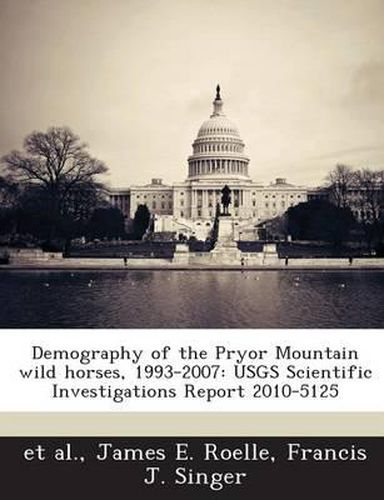Readings Newsletter
Become a Readings Member to make your shopping experience even easier.
Sign in or sign up for free!
You’re not far away from qualifying for FREE standard shipping within Australia
You’ve qualified for FREE standard shipping within Australia
The cart is loading…






Wild horses (Equus caballus) at Pryor Mountain were studied by direct observation from 1993 through 2007. All horses present were individually identifiable on the basis of coat coloration, head and leg markings, gender, and band associations. Of the 609 horses either present prior to foaling in 1993 or born since, ages were precisely known for 491 (observed as a foal). Ages for 52 horses were estimated through tooth eruption and wear patterns, and for the remaining 66 horses through body size, morphology, and anecdotal evidence concerning when they were present on the range. At varying intensities, never less than 30 days per year, all horses were inventoried and their band associations noted. Foals were paired with dams based on observations of attachment during the early days and weeks of life. Year of death was determined by identification of the carcass where possible. In the absence of finding a carcass, an animal that was not observed for 2 years was considered to have died in the year that it went missing. Animals that were removed from the herd and mares that were part of a contraception study were excluded from calculations of survival and foaling rates, respectively, as appropriate.
$9.00 standard shipping within Australia
FREE standard shipping within Australia for orders over $100.00
Express & International shipping calculated at checkout
Wild horses (Equus caballus) at Pryor Mountain were studied by direct observation from 1993 through 2007. All horses present were individually identifiable on the basis of coat coloration, head and leg markings, gender, and band associations. Of the 609 horses either present prior to foaling in 1993 or born since, ages were precisely known for 491 (observed as a foal). Ages for 52 horses were estimated through tooth eruption and wear patterns, and for the remaining 66 horses through body size, morphology, and anecdotal evidence concerning when they were present on the range. At varying intensities, never less than 30 days per year, all horses were inventoried and their band associations noted. Foals were paired with dams based on observations of attachment during the early days and weeks of life. Year of death was determined by identification of the carcass where possible. In the absence of finding a carcass, an animal that was not observed for 2 years was considered to have died in the year that it went missing. Animals that were removed from the herd and mares that were part of a contraception study were excluded from calculations of survival and foaling rates, respectively, as appropriate.